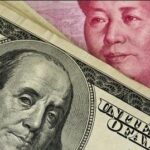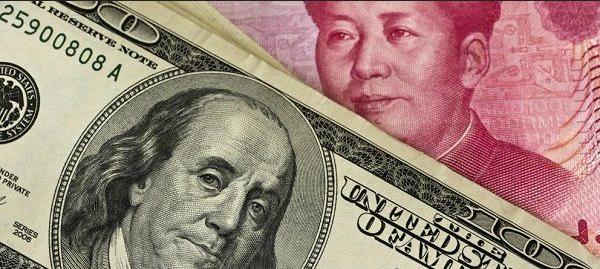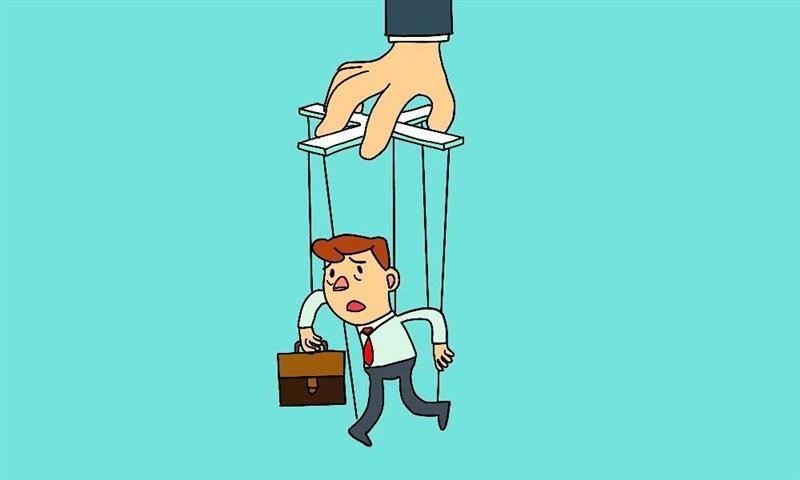Development economics considers factors such as health, education and working conditions, domestic and international policies, and market conditions with a focus on improving conditions in the world’s poorest countries.
This field of economics also examines both macroeconomic and microeconomic conditions and their factors related to the structure of developing economies, and domestic and international growth.
Macroeconomic factors broadly refer to influencing indicators such as interest rates, while microeconomic factors refer to individual influences.
Understanding development economics
Development economics studies the transformation of nations that emerge and transform into more prosperous nations.
Strategies for transforming a developing economy tend to be unique because the cultural, social and political backgrounds of countries can vary dramatically.
Economics students and professional economists create theories and methods that guide practitioners in determining practices and policies that can be used and implemented at the domestic and international policy level.
Some aspects of development economics include determining at what level population growth can help or hinder development, the structural transformation of economies, and the role of health and education in development.
Other aspects included are international trade and globalization, sustainable development, the effects of epidemics such as HIV and AIDS, and the impact of disasters on human and economic development.
Prominent development economists include Jeffrey Sachs, Hernando de Soto Polar, and Nobel laureates in economics Simon Kuznets, Amartya Sen, Esther Duflo and Joseph Stiglitz.
Theoretical approaches to development economics
Mercantilism : The earliest Western version of a theory of development was mercantilism, which developed in the 17th century, parallel to the development of the Nation-State.
Earlier economic theories gave little attention to development. For example, scholasticism, the dominant school of thought during the Middle Ages, emphasized the reconciliation of Christian theology with ethics, rather than development .
In the 17th century, the School of Salamanca, credited as the earliest school of modern economics, did not address the issue of development.
Mercantilism was a theory of economic development thought since it emphasized the search for the best possible means for the development of the economic power of the states, and with these, those of their population.
Among the influential thinkers of this theory were Philipp von Hörnigk, who emphasized an export-oriented economy, and the French minister of economy Jean-Baptiste Colbert, whose policies were highly influential in the development of America.
Economic nationalism
Economic nationalism has a strong influence of mercantilism and seeks the development of nations.
In colonial times, this type of thinking focused on increasing the domestic production of nations rather than that of colonies.
Key figures of economic nationalism include Alexander Hamilton, Friedrich List and the American Henry Clay.
Other theories of economic development include the stage-linear growth model, the theory of structural change, neoclassical theories, and international dependency theory.
Post-World War II theories
The origins of modern development economics are often traced to the need for and potential problems with the industrialization of Eastern Europe after World War II.
The key authors of this era are Paul Rosenstein-Rodan, Kurt Mandelbaum, Ragnar Nurkse and Sir Hans Wolfgang Singer.
Only after the war did economists turn their concerns toward Asia, Africa, and Latin America.
At the heart of these studies, by authors such as Simon Kuznets and W. Arthur Lewis, was an analysis not only of economic growth but also of structural transformation.
Linear growth stages model
One of the earliest theories of development economics, the linear stages of growth model was first formulated in the 1950s by WW Rostow in The Stages of Growth: A Non-Communist Manifesto, following the work of Marx and List.
This theory modifies Marx’s stage development theory and focuses on the accelerated accumulation of capital, through the use of national and international savings as a means to stimulate investment, as the main means to promote economic growth and , therefore, development.
The linear stages of growth model postulates that there are a series of five consecutive stages of development that all countries must go through during the development process.
These stages are “ traditional society, the preconditions for take-off, take-off, the push towards maturity and the age of high mass consumption” .
Simple versions of the Harrod-Domar model provide a mathematical illustration of the argument that better capital investment leads to greater economic growth.
These theories have been criticized for not recognizing that, although necessary, capital accumulation is not a sufficient condition for development.
That is to say, this early and simplistic theory did not take into account the political, social and institutional obstacles to development.
Furthermore, this theory was developed in the early years of the Cold War and largely derived from the successes of the Marshall Plan. This has led to the main criticism that the theory assumes that the conditions found in developing countries are the same as those found in Europe after World War II.
Theory of structural change
Structural change theory deals with policies focused on changing the economic structures of developing countries, which are mainly made up of subsistence agricultural practices to become a more modern, more urbanized and industrialized “manufacturing and service economy. “ diverse.
There are two main forms of structural change theory:
- Lewis’s two-sector surplus model , which sees agrarian societies as consisting of large quantities of surplus labor that can be used to stimulate the development of an urbanized industrial sector, and
Hollis Chenery’s patterns model of development approach, which argues that different countries become rich through different trajectories. The pattern that a particular country will follow, in this framework, depends on its size and resources, and potentially other factors, including its current level of income and comparative advantages relative to other nations.
Empirical analysis in the latter of these two frameworks studies the “sequential process through which the economic, industrial and institutional structure of an underdeveloped economy is transformed over time to allow new industries to replace traditional agriculture as the engine of growth.” economic”.
Structural change approaches to development economics have faced criticism for their emphasis on urban development at the expense of rural development , which can lead to a substantial increase in inequality between the internal regions of a country.
The two-sector surplus model, which was developed in the 1950s, has been further criticized for its underlying assumption that predominantly agrarian societies suffer from a surplus of labor.
Actual empirical studies have shown that such surplus labor is only seasonal and attracting such labor to urban areas can lead to the collapse of the agricultural sector.
The patterns of structural change development approach have been criticized for lacking a theoretical framework.
International dependency theory
International dependency theories gained prominence in the 1970s as a reaction to the failure of earlier theories to lead to widespread successes in international development.
Unlike previous theories, international dependency theories originate in developing countries and consider obstacles to development to be primarily external, rather than internal, in nature.
These theories consider that developing countries are economically and politically dependent on more powerful developed countries that have an interest in maintaining their dominant position.
There are three different main formulations of international dependency theory:
- The theory of neocolonial dependency,
- The false paradigm model and
- The dualistic dependency model.
The first formulation of international dependency theory, neocolonial dependency theory, has its origins in Marxism and views the failure of many developing nations to experience successful development as a result of the historical development of the international capitalist system.
Neoclassical theory
First gaining prominence with the rise of several conservative governments in the developed world during the 1980s, neoclassical theories represent a radical shift away from international dependency theories.
Neoclassical theories maintain that governments should not intervene in the economy; In other words, these theories claim that an unimpeded free market is the best means of inducing rapid and successful development .
Competitive free markets unfettered by excessive government regulation are considered to naturally ensure that resource allocation is made as efficiently as possible and that economic growth is elevated and stabilized.
It is important to note that there are several different approaches within the realm of neoclassical theory , each with subtle, but important, differences in their views regarding the extent to which the market should be left unregulated.
These different positions within neoclassical theory, which are:
- The free market approach
- The theory of public choice and
- The market-friendly approach.
Of the three, both the free market approach and public choice theory hold that the market should be entirely free, meaning that any government intervention is necessarily bad.
Public choice theory is arguably the more radical of the two with its view, closely associated with libertarianism, that governments themselves are rarely good and therefore should be as minimal as possible.
Academic economists of neoclassical theory have provided varied policy advice to governments in developing countries. See, for example, Economy of Chile (Arnold Harberger), Economic History of Taiwan (Sho-Chieh Tsiang).
Anne Krueger noted in 1996 that the success and failure of policy recommendations around the world had not been systematically incorporated into mainstream academic writing on trade and development.
The pro-free market approach, unlike the other two, is a more recent development and is often associated with the World Bank.
This approach still advocates free markets, but recognizes that many imperfections exist in the markets of many developing nations and therefore argues that some government intervention is an effective means of correcting such imperfections.
Research topics in development economics
Development economics also includes topics such as third world debt and the functions of organizations such as the International Monetary Fund and the World Bank.
In fact, most development economists are employees of these institutions or consultants for them. Many of these economists are interested in ways to promote stable and sustainable growth in poor countries and areas, by boosting self-reliance and education in some of the world’s lowest-income countries.
Anywhere political issues mix with economic issues we are talking about development studies.
Other topics in economic development include ways in which countries can recover from the negative effects of wars, health epidemics, and environmental catastrophes.
GDP controversy in development economics
Gross Domestic Product per capita is used by many development economists as a proxy for overall national well-being.
However, these types of measures are criticized for not measuring economic growth very well, especially in countries where there is a lot of economic activity that is not part of the measured financial transactions, such as home care and self-built homes. that inhabit them.
Compared to GDP per capita as a development indicator, the human development index has been proposed as a more effective measure to understand the state of development of nations and the well-being of people.
Recent developments
Recent theories speculate and deal with issues and variables that affect or are related to economic growth, such as primary, secondary and university education, political stability, rates and subsidies, justice systems, the infrastructure available in an nation, the availability of health care, prenatal care and clean water, the ease of doing export and import business, and equality of income distribution (as indicated by the Gini coefficient), and how to advise governments about macroeconomic policies, which include all policies that affect the economy. Education, for example, enables nations to adapt to the latest advances in science and technology, and creates an environment for new innovations. Therefore, it is an important factor in the development of nations.
Recognition and reception of development economics
Development economics begins to gain global importance since the Nobel Prize in economics is awarded to W. Arthur Lewis and Theodore Schultz, for their work in development economics.
Later in 1998, economist Amartya Sen would receive the Nobel Prize in economics for his work and contribution to fundamental problems in welfare economics, studies of freedom of choice, measures of well-being and poverty.
In 2001, another development economist, Joseph Stiglitz, would win the Nobel Prize in economics for his work showing that asymmetric information can provide key insights into many observed market phenomena, including unemployment and credit rationing.
In 2006, economist Muhammad Yunis won the Nobel Peace Prize for his work and efforts to create economic and social development for the most vulnerable social classes.
Yunus’ efforts to provide microcredit, especially to women, have proven to be useful for the development and well-being of communities excluded in the process of economic growth.
Finally, development economics acquires its most recent recognition in 2019 when three economists, two men (Michael Kremer and Abhijit Banerjee) and one woman (Esther Duflo) win the Nobel Prize in Economics for their field studies on public policies in the making of individual decisions that affect the development of citizens and that can eliminate poverty.











